SMITHSONIAN CENTER FOR FOLKLIFE & CULTURAL HERITAGE
This Elven Choir in Sweden Sings Tolkien’s Middle-earth to Life
Happy Tolkien Reading Day! On this day, we’re celebrating the Eldandili Fantasy Choir.
:focal(3017x2040:3018x2041)/https://tf-cmsv2-smithsonianmag-media.s3.amazonaws.com/filer_public/fe/a9/fea9e5bd-820a-49ab-b0ea-252c8d9ab443/b_1.jpg)
Enbacka village, Gustafs, Sweden, April 22, 2023
“Suilad, Eldandili Fantasy Choir. Mae govannen!” Greetings, Eldandili Fantasy Choir. Welcome!
The rehearsal is about to start. I’m trying to get their attention. But everyone is happy to see each other again. The voices of fifty singers fill the room. I raise my voice as the wizard Gandalf does when he confronts Bilbo, reminding him that he’s no conjurer of cheap tricks:
“Eldandili—friends of elves! Daro!” Stop. “Lasto beth lammen!” Listen to the word of my tongue.
The room falls silent. I smile and lower my voice.
“It’s time to start. All rise for vocal warmups.”
The singers relax their shoulders, hips, necks, and jaws. The sounds of yawns, sighs, tongue trills, lip buzzing, octave glides, and scale slides fill the room. Then they start to sing in harmony. We begin with the six-part arrangement of “The Passing of the Elves,” a tune familiar to all who know the Lord of the Rings soundtrack. It is sung in Sindarin, the language of the Grey elves of Middle-earth:
Si silivrin ne pherth ‘waewib / In windy fields now bright and clear
Cenim lyth thílyn thuiennin / We see your silver blossom blown
A Elbereth Gilthoniel / O Elbereth Gilthoniel (Elbereth star-kindler)
Men echenim sí derthiel / We still remember, we who dwell
Ne chaered hen nu ‘aladhath / In this far land beneath the trees
Ngilith or annún-aearath / Thy starlight on the Western seas
They sing with focus and solemnity—as if they themselves worship the Vala guardian, Elbereth Gilthoniel, celebrating her with this hymn on their way to the Grey Havens. I know that this will intensify as the singers get into their cosplay during the concerts in just two weeks. We are ready to sing Elvendom to life.
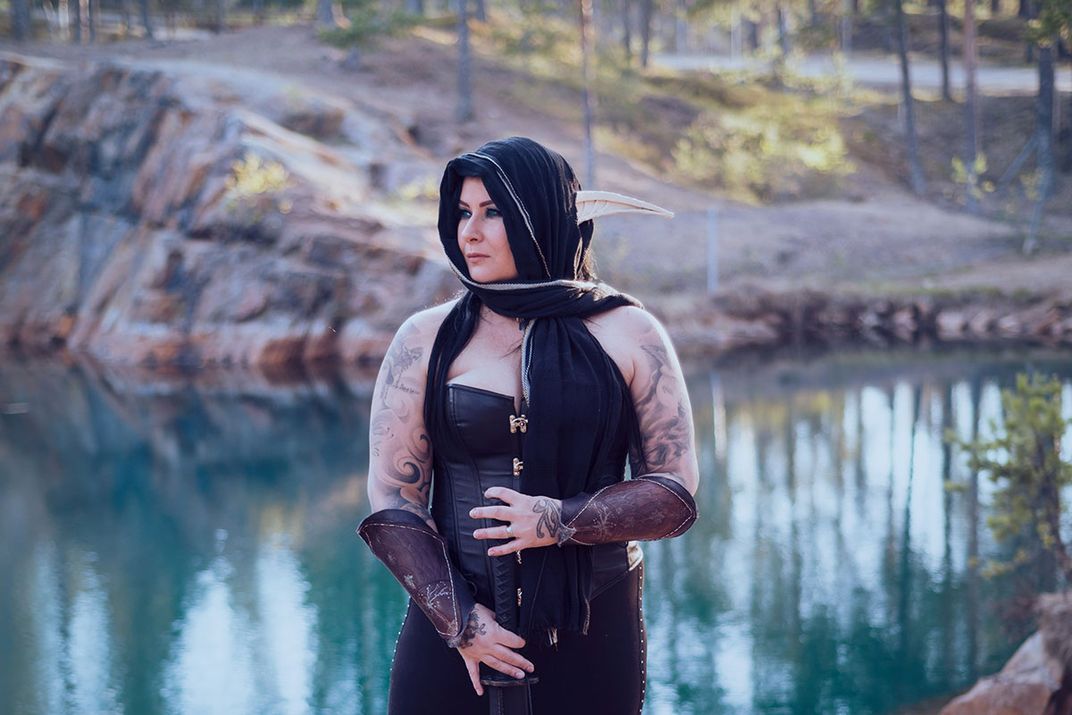
Music in Arda and Afar
As a singer, artistic director, and a musicologist, it is quite natural that I love most among all J. R. R. Tolkien’s writings Ainulindalë, the first part of The Silmarillion. Translating to “The Music of the Ainur,” this part tells the story how the entire cosmos was sung into existence by “The Holy Ones,” the Ainur, through music given to them in a vision by Eru Illúvatar, “The One.” We are told they first sang each part alone, before combining their themes into choral harmonies more wonderful and beautiful than the earliest music:
“Then the voices of the Ainur, like unto harps and lutes, and pipes and trumpets, and viols and organs, and like unto countless choirs singing with words, began to fashion the theme of Illúvatar to a great music; and a sound arose of endless interchanging melodies woven in harmony that passed beyond hearing into the depths and into the heights and the places of the dwelling of Illúvatar were filled to overflowing, and the music and the echo of the music went out into the void, and it was not void” (Silmarillion, Ainulindalë ).
Melkor (later called Morgoth), the most powerful of the Ainur, thought that Illúvatar paid too little attention to the void and the pits of the earth, so he sought to create things there on his own. Melkor brought “discord” into the music of the Ainur. Intricate and ever-changing conflicts between purity and corruption, harmony and dissonance, define the creation of the world in Tolkien’s legendarium, as it also defines humanity in general and singing in particular.
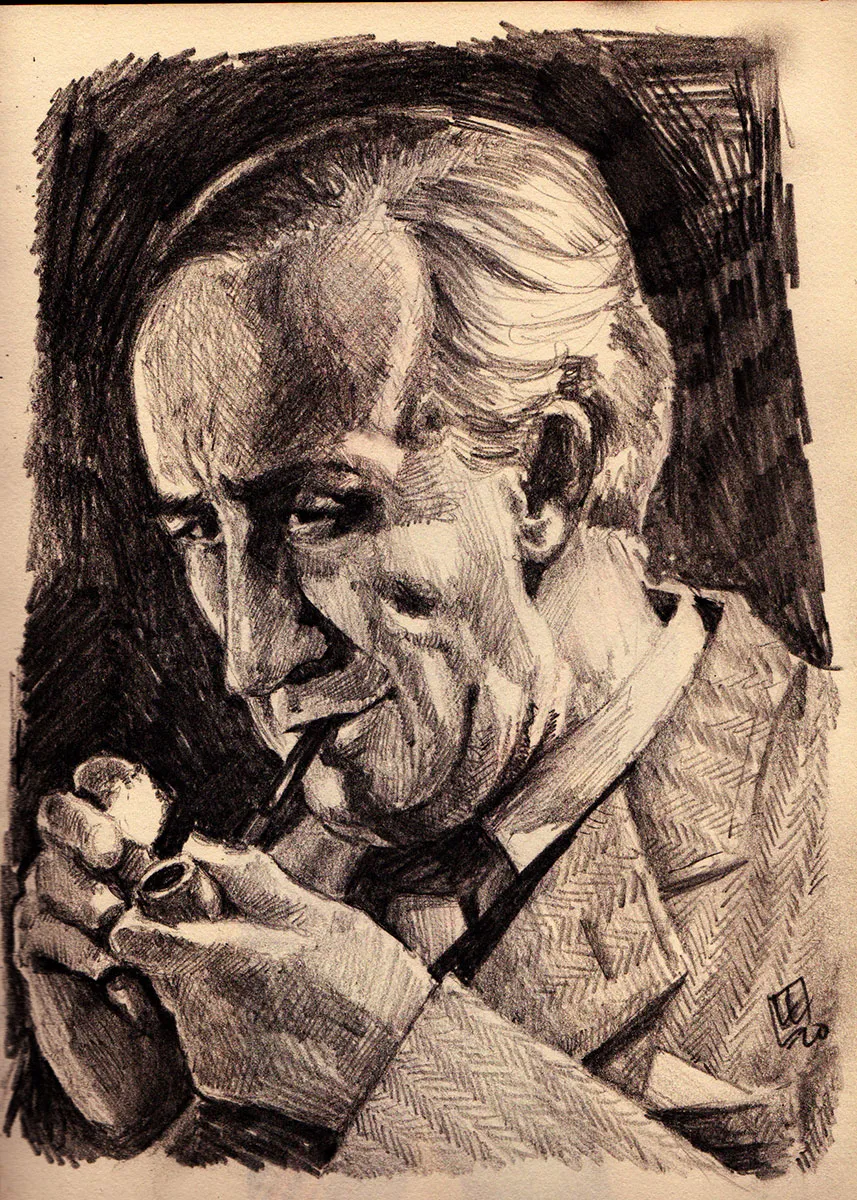
Besides fantasy literature, philosophy, poetry, and visual art, Lord of the Rings author Tolkien has also influenced composers and other music creators in many genres. Musical elements are ever present in his epic storytelling. It might be explicit and clear, such as the piercing sound of Oromë’s valaróma, the tunes of Daeron’s flute and Tom Bombadil’s “Hey do! Merry do!” And let’s not forget Beren’s Song of Challenge, Lúthien’s spell-songs, the lament for the children of Húrin, or the “most ancient songs of the Elves, of which echoes are remembered still in the West,” as Tolkien writes. The musical historiography of Arda, “Tolkien’s fictional Earth,” is sung rather than spoken in weaving songs of reminiscence. As Fëanor proclaims as a response to The Doom of the Noldor: “The deeds that we do shall be the matter of song until the last days of Arda!”
Rhythmic emphasis and phonetics were of great importance for the philologist Tolkien, who mastered several poetic meters and invented various ones himself. Languages, as well as dialects and accents, are musical phenomena, and Tolkien’s profound musicality is ever present in his writing. It is no wonder that many composers and musicians find themselves drawn to his prose and the relationship between darkness and light his stories explore.
Elven Music in Tolkien’s Legendarium
The first elves in Arda are named the Quendi—those who speak and sing. They made themselves known to the Vala Oromë through song: “in the quiet of the land under the stars he heard afar off many voices singing” (Silmarillion, Of the Coming of the Elves). Tolkien portrays the Eldar, the name Oromë gave to the elves, using music as a descriptor of different hosts: the Noldor were “renowned in song,” and the Teleri made music to, and by, the sea—the element with most evidence of the Songs of the Ainur.
In a handwritten manuscript, written in 1959, Tolkien tells us that elves sang before they could speak. During the awakening of the elves, they “dwelt by the stream, and soon they began to make verse and song to the music of the water (…) they sang sweetly and their voices echoed in the stone, mingling with the rush of the falls.” Clearly, music and song are an important identity marker for the peoples of Arda, as it is on our earth.
The British composer Donald Swann dressed several Tolkien poems in musical costumes. When Tolkien first heard Swann’s composition for the poem Namárië (meaning “be well” in Quenya), he said that he had heard this music in a different manner in his head. Then he started to hum something similar to a Gregorian chant.
It is well known that Tolkien was a devoted Catholic. When he lost his mother at age twelve, he and his brother lived with their aunt in Birmingham, England, where the brothers both served in the morning mass at the Oratory—at a time when its musical environment included Gregorian chants. It’s therefore plausible that Tolkien experienced musical Gregorianism quite early in life, and he later translated several liturgical texts into the elven tongue Quenya.
The most interesting question, I think, is why Tolkien associated Gregorianism to elven songs and poems. What is it about elven atmospheres and aesthetics that are embodied and brought to life through song? To answer these questions, I sat down with a few members of Eldandili Fantasy Choir to discuss elven aesthetics and what it means to transform into an elf through song and costume.
The Eldandili Fantasy Chronicles
The awakening of Eldandili Fantasy Choir came in early 2018. It was the blooming of a seed that was planted already in 1998–99 when I first read Ainulindalë as a young fantasy fanatic who engaged with Dungeons and Dragons and Vampires LARP on weekends. What if I could start a choir with the mission to sing Arda to life in this world? Could I create a community for singers and musicians who, like me, need a clan where their knowledge about fictional worlds is celebrated? Where nerdiness is the new black?
When The Fellowship of the Ring film was released in 2001, sunlight and water reached the seed, and it started to grow, slowly. The following releases of The Two Towers (2002) and The Return of the King (2003) nourished it even more. But it hadn’t reached the surface. It lay there, beneath mud and stone, waiting like The One Ring at the bottom of the river Anduin.
For fifteen years it waited. Then, in 2018, chance came to realize my long-term dream. I had come to know Daniel Larsson, organist at the local church in Gustafs, Sweden, about 120 miles northwest of Stockholm. It didn’t take much convincing before the two of us ordered sheet music for the film suite from Howard Shore’s brilliant Lord of the Rings soundtrack. We brought all the singers we knew together, and rehersals started in January 2018.
In October the same year, we did two sold-out shows of Lord of the Rings in Concert all in Middle-earth cosplay. I dressed as the Silmarillion’s Yavanna, the Vala queen of the earth. In the choir, we had Nazgûls, riders of Rohan, elves, and men of Gondor. We were accompanied by the mighty church organ and one violin. I remember standing there, in the middle of my teen dream, with tears streaming down my face. I was so emotionally exhausted after the concerts that I fainted in front of the audience and the choir.
Our choir was supposed to be a one-time thing, a project with an expiration date. But the success extended the project. We planned one more production: Gamer – epic themes from legendary video games. The ensemble grew. New singers and musicians joined us, and Eldandili Fantasy Orchestra was born. The organ stood in the center but was reinforced by a cello, a trumpet, percussion, a guitar, a flute, and an electric bass.
Gamer was also a huge success; every performance sold out. We also discovered a new, younger audience. I remember meeting a girl with green and purple hair. She was sixteen and a gamer. She told me she had never attended a choir concert before. In fact, she rarely went out at all. When she heard about our event, she just had to come.
“I wanted to hear music from World of Warcraft so bad,” she said. She has been in our audience ever since.
I planned for an even larger production: Fantasy on Screen, centering music from The Hobbit. But, in 2020, COVID put everything on hold. We could only meet via Zoom. I’m sure every singer, and every musician, knows how hard it is to make music this way. Mostly, we met to speak about Tolkien and other fantasy lore. When the virus started to loosen its hold, we reassumed rehersals outdoors. We sang in rain and strong wind, defying the harsh climate of the North. Yet, the ensemble grew even more.

In May 2022, when we performed Fantasy on Screen, Eldandili Fantasy Choir and Orchestra consisted of forty singers and thirteen musicians. We finally had a French horn, two more violins, and a piano. And the shows sold out again. In May 2023, we premiered our most grand production yet: Heroines and Heroes – a musical adventure through Narnia, Azeroth and other magical worlds. Eight new singers joined us, and the orchestra grew with a flutist. We also got a new conductor, Minna Larsson Heimo.
In collaboration with SENSUS, an nonprofit educational association, Eldandili Fantasy Choir has become a study circle that can encourage music education and offer a democratic platform where people with shared interests can meet and learn together, no matter their individual background. As we become a more organized, educational association (förening in Swedish), we can welcome more people into our community whether they are singers, musicians, or neither. Not all members sing in the choir. Some engage in communication, film production, and administration, while others participate only in our cosplay workshops or act as roadies or event managers.
There lies beauty in the educational intersection between amateurs and professionals. As a young and inexperienced musician, or singer, you yearn for others to take you seriously, to include you in contexts where you find support and mentorship. But professionals can learn a lot from amateurs too. They can be reminded that music is supposed to be about soulful togetherness, empowerment, and sheer joy—not just achievements and competition.
I use this as a mantra in Eldandili Fantasy. We take music, and cosplaying, very seriously, but that doesn’t mean the death of happiness, pleasure, and creativity.
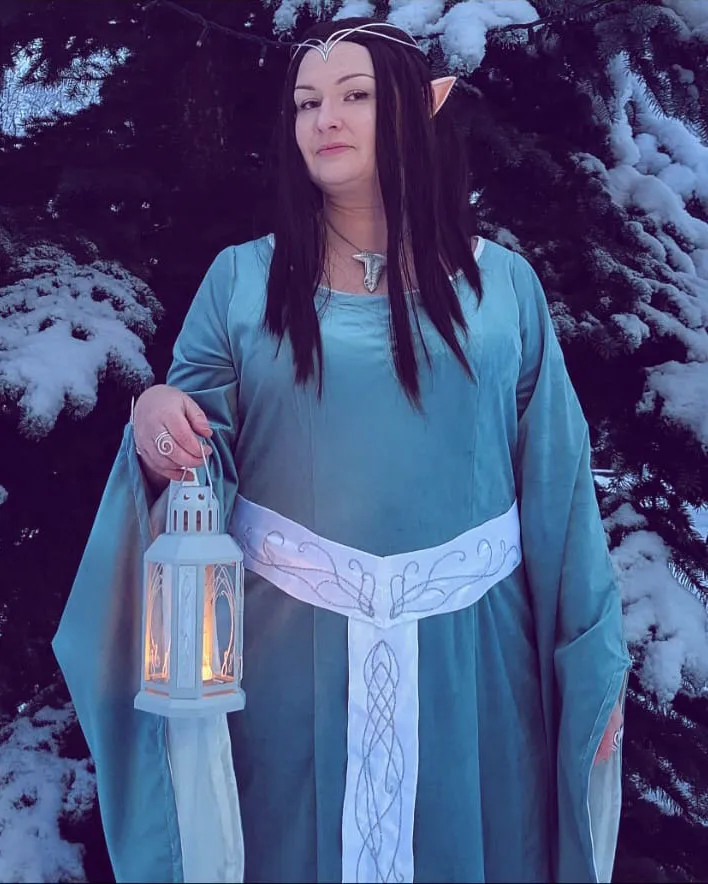
Elven Attraction
While not all singers in Eldandili Fantasy Choir are devoted to elven lore, some, such as myself, have reserved a special place in their hearts for elves. What is it about elves for us to deserve such elevated positions? What compels us to embody elves in our performances?
Cellist Leo Skog opines: “This sounds a bit banal, but even so, I believe that it’s an important feature of the elves that we’re attracted to: they are either beautifully handsome, or they radiate a mysterious sex appeal. We tend to be drawn to things that express normative beauty.”
Jenny Falk, a female tenor, agrees: “It’s about living up to ideals. To become an elf is to express something unachievable—to become a supreme being for a while and forget about mundane troubles, finally.”
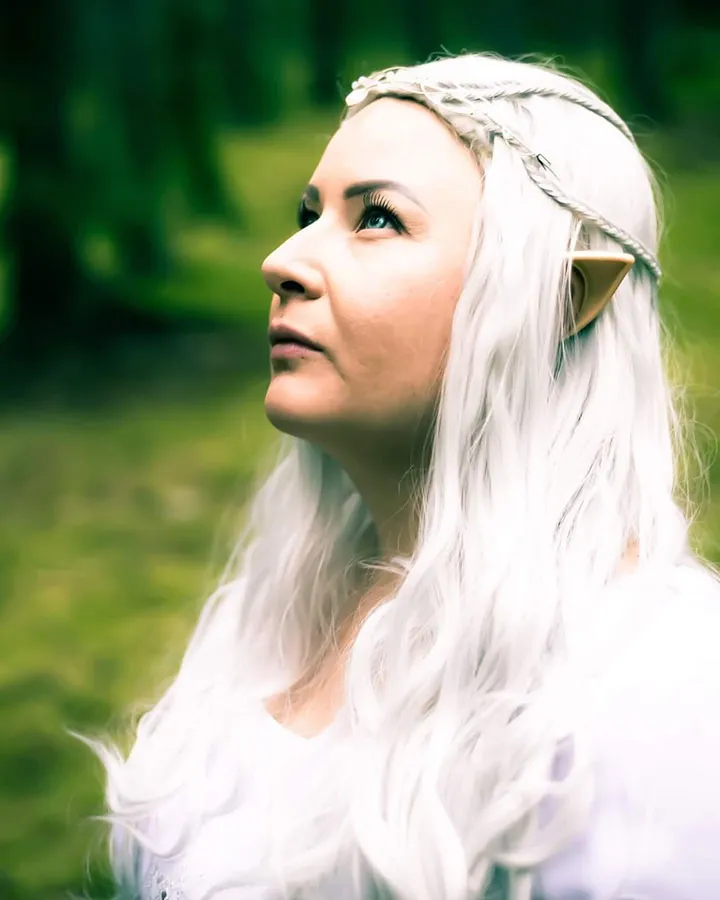
Soprano Sofi Wiklander continues: “Becoming an elf is about escapism, to replace the daily grind with enchantment and magic. Also, normative feminine expressions are not as devalued among the elves as in our world.”
It’s correct that Tolkien’s elves represent general Western standards of beauty. Elves are described as the fairest of all living creatures. To be such a creature in Tolkien’s legendarium implies that you are slender, tall, graceful, intellectual, and that you have a light complextion—“all parts of a very hegemonic narrative,” says Lee Widegren Lundin, graphic designer in Eldandili Fantasy.
But the lure of the elves lies not just in normative appearances. It’s also about invincibility. Tenor Jesper Swallinger says that “the armor, the materials—everything is so massive and intense. It gives you both another impression and expression to transform from your everyday suit into a fantasy armor. You become stronger.”
Closeness to nature is another theme that appears when we speak of elves and elven aesthetics. Tolkien wrote that elves loved the beauty of nature, specifically water and the stars. This love is shown in exquisite elven craftmanship and biomimicry. Alto Ulrika Wiborgh describes her Tauriel cosplay: “It is really leaves draped with leaves—almost like a rosebud, only with different fabrics and textures. This is a principal thing with elven clothing, no matter if they are all draped in velvet or if they use different materials like the woodland elves. There are rarely any sharp edges.”
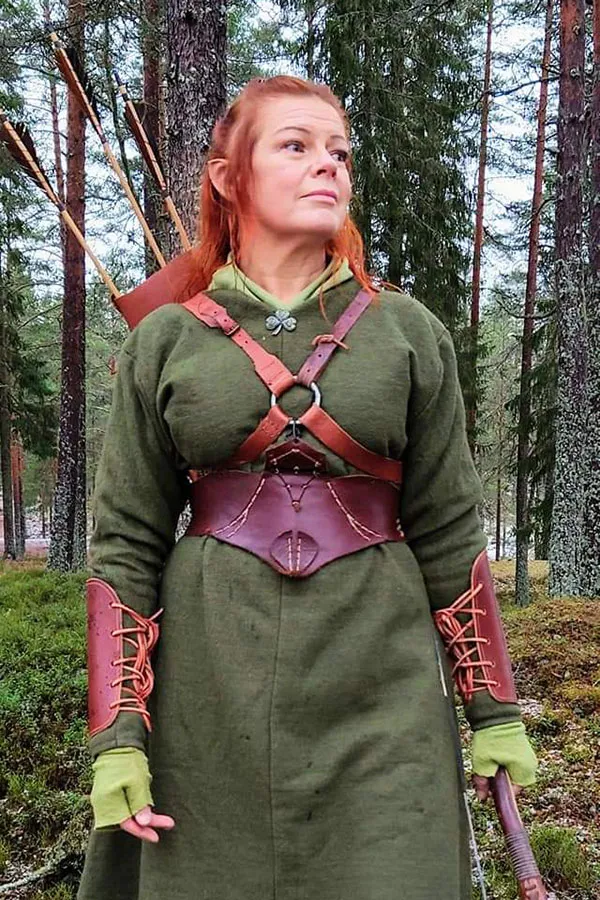
Alto Ninni Casserstedt agrees: “Nothing is sharp. No angular shapes, no bright neon colors, no corners even. The only sharp things are their blades and intellects.”
We began to wonder, are these themes and aesthetics also found in elven music?
Elven Voices
In Lord of the Rings, Tolkien describes their singing in the scene where Frodo and Sam encounter the passing of the elves:
“Clear voices rose and fell in the starlit air (…) one voice rose now above the others. It was singing in the fair elven-tongue, of which Frodo knew only little. Yet the sound blending with the melody seemed to shape itself in their thought into words which they only partly understood.”
We know from this that Tolkien imagined elves to sing in polyphony—individual melodies combining into a multivocal harmony—and that their voices were clear and their language fair—all elements similar to a Gregorian chant. Elven singing stands in direct contrast to the vocal sounds of the orcs (in Goblin-town), which is described in The Hobbit as a “croak,” accompanied only by stomping feet. This goblin song aims to make a mockery out of pure and beautiful songs. Similarily, in Lord of the Rings, the orcs are described to sing “with harsh voices.” And as we know, what the fellowship read about in The Book of Mazarbul, and experience themselves, in Moria are “drums. Drums in the deep.”
There are no signs of singing, in a narrow sense of the word, in the world of the orcs. In fact, Samwise Gamgee, Frodo Baggins’s constant companion, fears that the world will be deprived of its songs if evil prevails. Singing is the demonstration of purity, goodness, and light.
“When you sing in Sindarin, or Quenya, you become ethereal and eternal, otherworldly almost,” soprano Kerstin Koij states. “It becomes so tangible that we are in a different world, which is, even with all its terrors, better. And the elven languages are beautiful—soft, no sharp edges. Everything just flows. Even if you only speak, it’s like a song.”
When Kerstin describes her experiences of singing in Sindarin and Quenya, she uses the same words we use to describe elven aesthetics: extended, floating, organic, and exquisite lines. Alto singer Ninni Casserstedt describes Sindarin songs as “the movements of a tuille curtain dancing in the wind.”
For a Swede, this metaphor makes perfect sense. Swedish is generally placed deeper in the mouth cavity and is experienced by the singers as a “harder, more guttural and brutal language” compared to Sindarin. The diphthongs and the soft, voiceless consonants (like the “th” sound in father) partake in aspects that make Sindarin a very singable language, even though there are some struggles when several syllables or voiceless consonants appear in just one note (like pherth, meaning “fields”).
The elven languages bring a certain authenticity to the elven songs that would be lost if they were sung in English. The fantasy becomes more real through elven tongues.
“A language is a very intense identity marker,” Kerstin says. “To strip a people of their language is to tear their selves out of their bodies. It’s of no wonder that the elven languages in Arda are formulated to be both political and historical, with certain aesthetical qualities dependent on cultural context. They enhance the sense of being genuine and legitimate even though everything is fictional.”
Elven Musical Atmospheres
When the choir sings in Sindarin, it brings a solemn devotion to the room. Eldandili singers and musicians often evoke atmospheres, or vague moods or auras, in describing the elven music in Shore’s score to Lord of the Rings.
“There is this aura of absolute stillness and tranquillity in elven music—a self-evident and dignified spirit of eternity,” first violinist Erik Arnberg says. “If we compare this to the music of the hobbits, for example, we almost see the same differences as between ancient religious chants and pastoral folk music.”
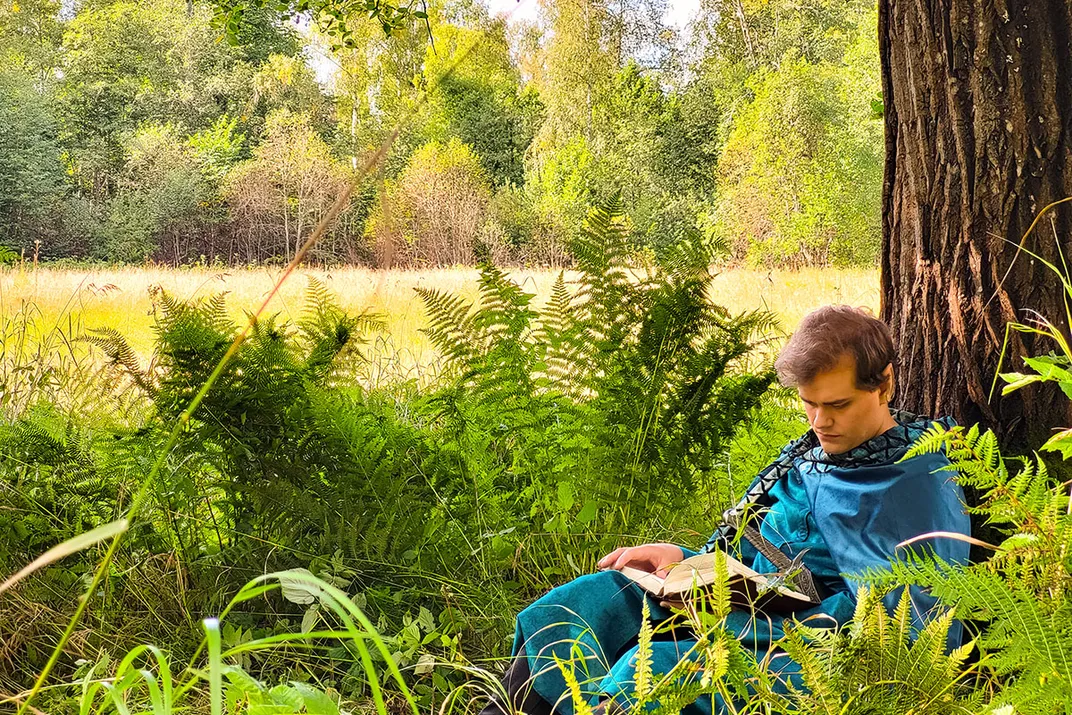
“Elven music is ethereal,” Lee says. “It is light, high-pitched, and far-reaching like air or streams of water. The phrases are long and organic like a breath, sung in a soft and angelic manner. It is hard to describe by any musical categories. It is more like an elemental kind of music.”
Truly, there lies a tone of time and age in Shore’s elven music. It is strange yet comforting. It is exotic, but, at the same time, it feels as if it has been here forever, far longer than any of us. In a way, this is displayed in movements where just one vowel stretches over several notes, like in the melismatic “Rivendell Theme (Many Meetings).” Eternity is also expressed in the more syllabic “Lothlórien Theme” but in a different manner. Here eternity lies in the mode, in long vocal phrases sung in legato attuned to the rhythms of breathing and to the tempo of our heartbeats as we sleep.
The elven atmospheres are not simple but intricate and unpredictable. There’s room for a journey within a song. “‘The passing of the Elves’ for example, sounds like both longing and sorrow all at once—longing to Aman, but a sadness to leave the shores of Middle-earth,” Kerstin states. “But it is all woven together, wrapped in the light and eternal mode of the elves. We hear goodness in their songs.”
Becoming the Eldar of Story and of Song
What Tolkien heard in his head when imagining elven songs we’ll never know in detail. We know that he described elven songs in terms of polyphony, beauty, and light. For this, Shore uses female voices as expressions of elven cultures. Angelic in character, these voices portray mysterious dreamlands, ethereal moods, and eternity. First and foremost, they are songs of goodness, and they are the victorious antagonists to the guttural chants of the orcs. Again, we see very normative and Western ideas about what is beautiful and fair.
But fantasy is not all fictional. It is written by people deeply affected by their sociocultural context. Tolkien’s critical view of industrialization haunts the Isengard narrative, where its Lord, Saruman, destroys the forests by fire and axe to make room for his industrial breeding of the Uruk-hai. Arda is not set apart from our world but a product of it. That is why “it feels so authentic, even though we portray fictional characters,” as tenor Rasmus Swallinger says.
However, there’s room for imagination and creativity in a creation where dragons, elves, and magic exist. In this room, we take refuge to set our dreams and fantasies free. On this journey, we explore ourselves, finding aspects by using an already faded map. As a cosplayer, you are a sculptor. You shape and chisel out the contours of not just clothing, hair, and makeup but also your character’s personality, experience, and expressions. You move differently, talk differently, and sing differently. Being, and singing, in cosplay reveals capabilities that we already had—we just didn’t know we had them. These fictional characters help us to move forward and be curious about what will come into light when we create another costume and sing it to life.
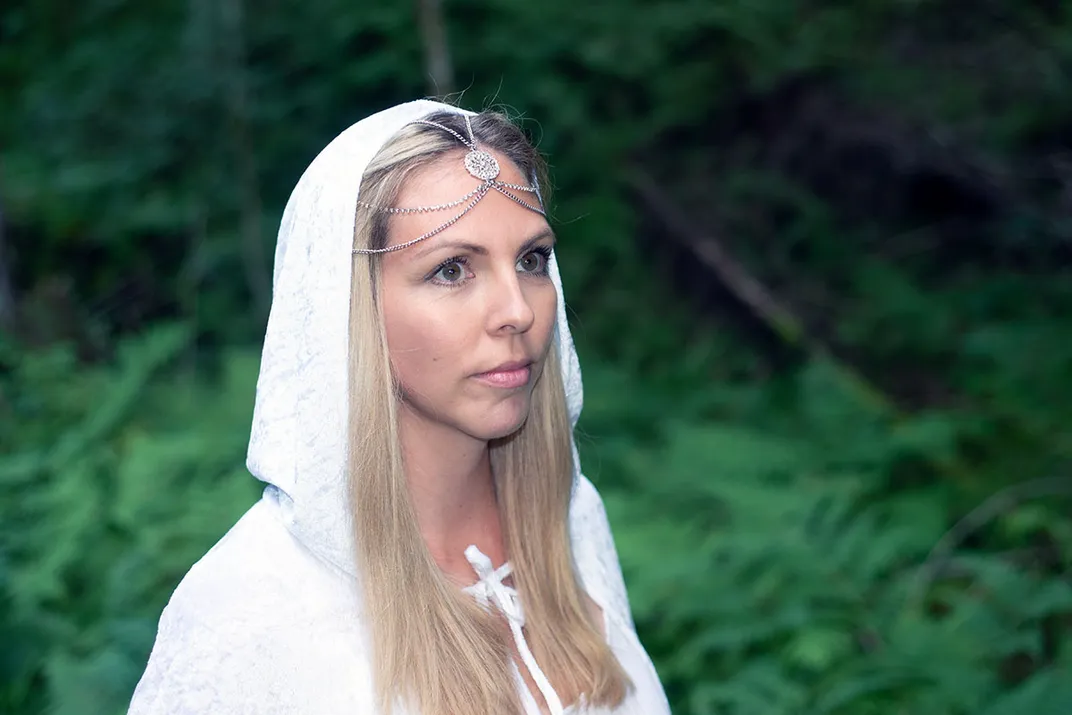
Being a singing cosplayer on the brink of becoming an elf is about challenging our limitations as singers and as humans. Therefore, one doesn’t dress up as an elf to hide. One transforms to explore what we can become if we test our capacities in new, playful ways. It is about discovery as much as it is about performance. The ideal image of an invulnerable elf helps us to find the courage to release parts of ourselves that we’ve been forced to hold back.
We should always remember that, in Lord of the Rings, it was the simplest folk, not elves, who saved Middle-earth from damnation and everlasting darkness. But they needed help from the elves to discover their strength to do so. We need to find our fellowship where this kind of support is possible, where, as Tolkien once said, “fantasy remains a human right.”
Jennie Tiderman-Österberg is an ethnomusicologist at Dalarnas museum in Sweden, a PhD student in musicology at Örebro University, and a singer.
The author would like to thank all the interviewees from Eldandili Fantasy. A special thanks to Lee Widegren Lundin and Kristoffer Ärnbäck who proofread the article.
Bibliography
Cunningham, M. (2010). “An Impenetrable Darkness”, in Steimel, H. and Schneidewind, F. (eds.) Music in Middle-earth, pp. 215-240. Zurich and Jena: Walking Tree Publishers.
Devaux, M. and Spirito, G. (2019). “Laments and Mercy: Tolkien and Liturgical Music”, in Eilmann, J. and Schneidewind, F. (eds.) Music in Tolkien’s Work and Beyond, pp. 29-58. Zurich and Jena: Walking Tree Publishers.
Framback, S. (2019). “The Music of the Evil Ones in Middle-earth”, in Eilmann, J. and Schneidewind, F. (eds.) Music in Tolkien’s Work and Beyond, pp. 329-340. Zurich and Jena: Walking Tree Publishers.
Hostetter, C. F. (ed.) J. R. R. Tolkien. The Nature of Middle-earth. Late Writings on the Lands, Inhabitants, and Metaphysics of Middle-earth. London: Harper Collins Publishers.
Mann, M. F. (2019). “Musicality in Tolkien’s Prose”, in Eilmann, J. and Schneidewind, F. (eds.) Music in Tolkien’s Work and Beyond, pp. 207-233. Zurich and Jena: Walking Tree Publishers.
McIntosh, J. (2010). “Ainulindalë: Tolkien, St. Thomas, and the Metaphysics of Music”, In Steimel, H. and Schneidewind, F. (eds.) Music in Middle-earth, pp. 53-74. Zurich and Jena: Walking Tree Publishers.
Salo, D. (2004). A Gateway to Sindarin. A grammar of an elvish language from J. R. R. Tolkien’s Lord of the Rings. Salt Lake City: The University of Utah Press.
Tolkien, J. R. R. (1999[1977]). The Silmarillion. Edited by Christopher Tolkien. London: Harper Collins Publishers.
Tolkien, J. R. R. (2004[1954]-55). The Lord of the Rings. Boston: Houghton Mifflin Company.
Whittingham, E. A. (2019). “’A matter of Song’: The Power of Music and Song in Tolkien’s Legendarium”, in Eilmann, J. and Schneidewind, F. (eds.) Music in Tolkien’s Work and Beyond, pp. 135-158. Zurich and Jena: Walking Tree Publishers.
Young, M. (2007). Projecting Tolkien’s Musical Worlds. A Study of Musical Affect in Howard Shore’s Soundtrack to Lord of the Rings. Saarbrücken: VDM Verlag Dr. Müller
